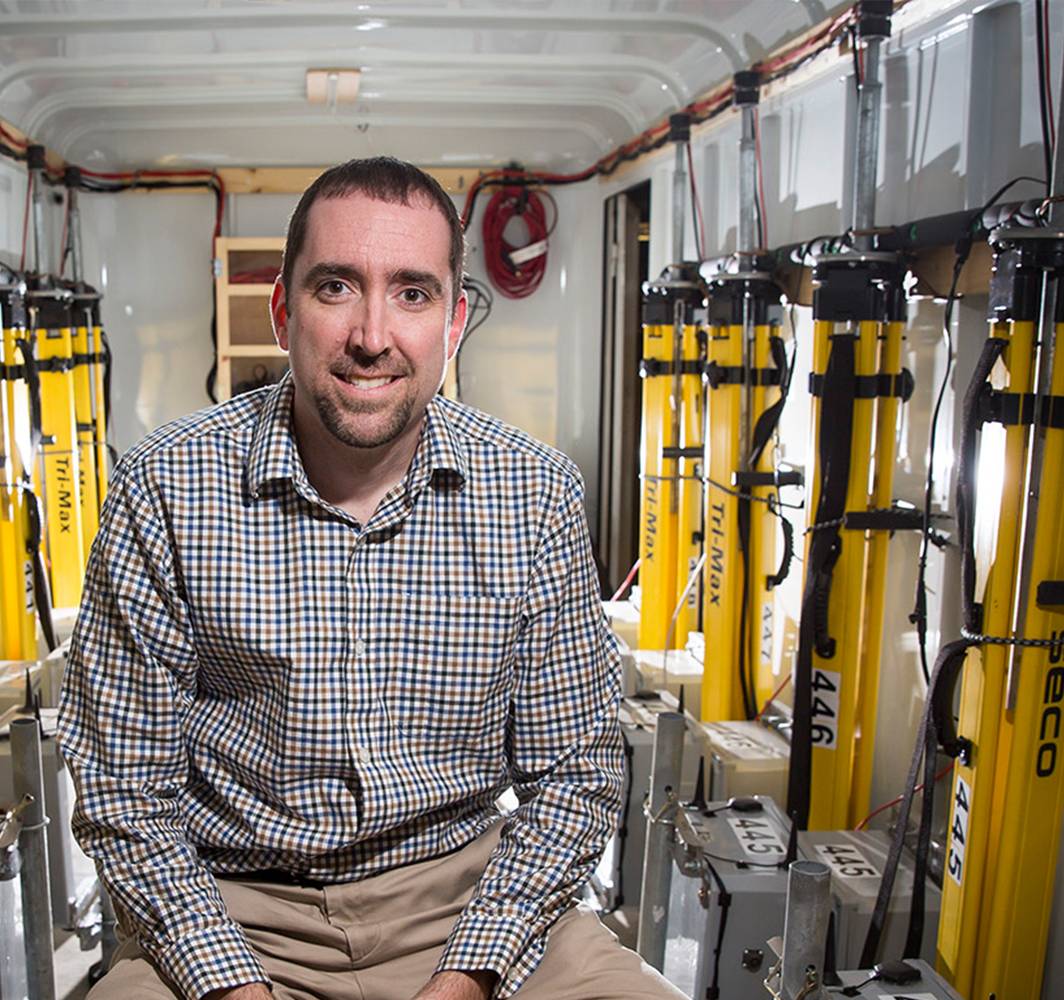
The projects for which Chris Weiss received the grants focus on an improved understanding of how tornadoes form in the southeastern U.S. and how to better predict them to help save lives and minimize property damage.
Texas Tech University's Chris Weiss, a professor of atmospheric science in the College
of Arts & Sciences' Department of Geosciences, received two grants from the U.S. Department
of Commerce's National Oceanic and Atmospheric Administration (NOAA) to improve the
understanding of how tornadoes form in the southeastern U.S. and how to better predict
them to help save lives and minimize property damage.
Weiss was awarded $220,000 for the "Propagation, Evolution and Rotation in Linear
Storms (PERiLS)" project and $211,176 for his "Assessment of the Role of Cold Pools
in Low-Level Vorticity Production Using Direct Observation and Ensemble Sensitivity
Analysis" project.
"The two grants are actually very closely related, both being part of the Verification of the Origins of Rotation in Tornadoes Experiment – Southeast (VORTEX-SE) mission," Weiss said. "The 'Cold Pools' grant is largely an analysis of data collected for VORTEX-SE during the 2018-2019 field campaign, whereas the PERiLS grant is for instrument deployment in the upcoming VORTEX-SE field campaign, which is scheduled to take place in 2022 and 2023."
The cold pools grant is a collaboration between Texas Tech and NOAA's Earth System Research Laboratory in Boulder, Colorado. The lab will assist in creating some of the high-resolution numerical simulations used for this work.
Weiss said the cold pools grant will allow him to look back at data gathered from December 2018 to April 2019 by the university's National Wind Institute's StickNet platforms.
 "We placed 24 probes from southern Tennessee through northern and central Alabama
to make measurements of temperature, humidity, wind and pressure fluctuations near
potentially tornadic storms," Weiss said. "Part of the funded work will look at direct
analyses of these measurements to see if there are some clues as to how to distinguish
tornadic and non-tornadic storms. The other portion of the work will use numerical
simulations of select cases to identify what aspects of the upstream atmospheric state
most influence a specific outcome – for instance, tornado development. This type of
analysis helps us understand the dynamics of each case and also improves our sampling
for future events, since we will have a better idea of where to locate these observations
to get the most impact."
"We placed 24 probes from southern Tennessee through northern and central Alabama
to make measurements of temperature, humidity, wind and pressure fluctuations near
potentially tornadic storms," Weiss said. "Part of the funded work will look at direct
analyses of these measurements to see if there are some clues as to how to distinguish
tornadic and non-tornadic storms. The other portion of the work will use numerical
simulations of select cases to identify what aspects of the upstream atmospheric state
most influence a specific outcome – for instance, tornado development. This type of
analysis helps us understand the dynamics of each case and also improves our sampling
for future events, since we will have a better idea of where to locate these observations
to get the most impact."
The PERiLS project has a wealth of contributors from various universities and federal labs, including the University of Oklahoma, the National Severe Storms Laboratory, Purdue University and the University of Louisiana-Monroe. These other institutions will provide other observational assets, including Doppler radars, wind profilers and balloons.
The PERiLS project is aimed at understanding tornado development in southeastern storms.
"The PERiLS project is very specifically targeting tornado production from what we call 'quasi-linear convective systems,' or long lines of thunderstorms that often spin up tornadoes in inflection points with very little warning," Weiss said. "Our mission is much more mobile than in 2018-19. We will place StickNet instruments ahead of these storms a few hours in advance, making crucial measurements of temperature, humidity, wind and pressure fluctuations."
Article by Amanda Bowman, Texas Tech Today (November 9, 2020)
